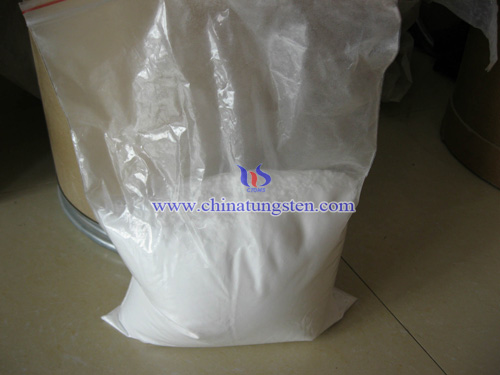Ammonium Tungstate Produces AMT by Ion Exchange
- Details
- Category: Tungsten Information
- Published on Friday, 11 March 2016 16:41
A process for producing crystalline ammonium metatungstate (AMT) from ammonium tungstate solution by introducing AT solution into an ion exchange column containing a weak acid (carboxylic group) cation exchange resin, and collecting the effluent from the column until a pH of about 3.5 is reached. The effluent solution is then digested at about 98 DEG C for about 5 hours, followed by crystallization of AMT by conventional processes, such as, evaporation or spray drying.
EXAMPLE: A two inch resin column is prepared using 539 grams of Duolite CC3 H resin. Add 1.5 liters ofammonium tungstate (185 grams W per liter) solution at a rate of 25 milliliters per minute to the top of the resin column. Collect the effluent in a vessel with agitation and monitor the pH of the effluent with a pH meter. When the pH of the effluent reaches 3.5, stop the collection ofthe effluent. The volume of the effluent solution containing ammonium metatungstate ion is 1.4 liters. Digest this solution at 98C for 5 hours and evaporate to dryness to isolate the crystalline ammonium metatungstate product. Wash the column with water and collect this wash solution (about 200 milliliters) which contains small amounts of tungsten. Use this wash solution for diluting the initial ammonium tungstate solution. Continue washing the column until the washing solution becomes almost neutral in pH. At this time, check the wash solution with Nesslers reagent. If it gives a negative test for ammonium ion, the column is ready for regeneration. in order to regenerate the column to the hydrogen form, add sulfuric acid having a concentration of0.86 normal at a rate of 25 milliliters per minute to the column until the pH becomes strongly acidic.


| AMT Supplier: Chinatungsten Online www.ammonium-metatungstate.com | Tel.: 86 592 5129696; Fax: 86 592 5129797;Email:sales@chinatungsten.com |
| Tungsten News&Tungsten Prices, 3G Version: http://3g.chinatungsten.com | Molybdenum News & Molybdenum Price: http://news.molybdenum.com.cn |



 sales@chinatungsten.com
sales@chinatungsten.com